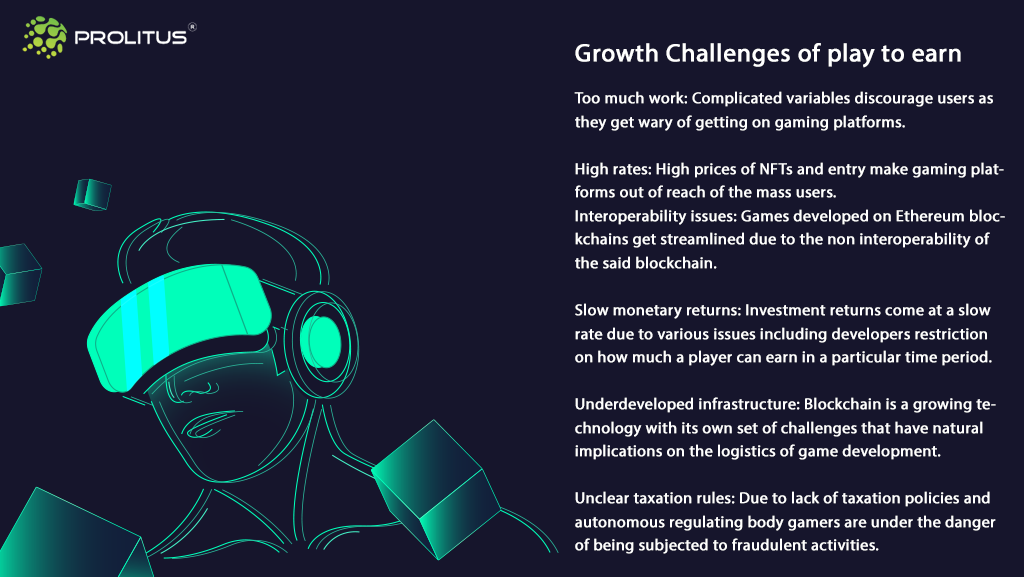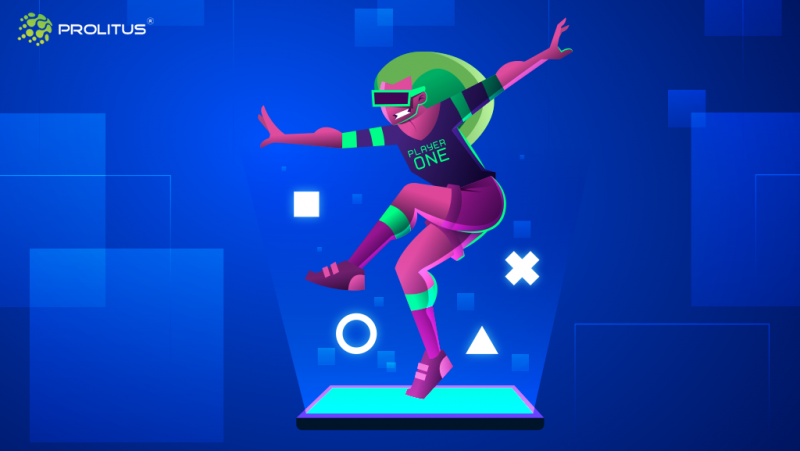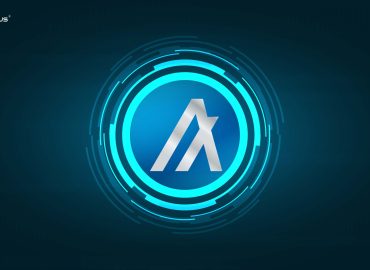Play to earn gaming model: the beginning
Do you remember crypto kitties? Anyone interested in the crypto world must be aware of this top-rated game where players buy, trade, and breed token-based digital kitty cards. This blockchain-based game developed on the Ethereum network was one of its own back in 2017. Crypto enthusiasts were quickly drawn to the concept like a horse to the water. The idea to invest and eventually playing online games to earn tokens sent ripples in the crypto community. The concept picked up steam in the lockdowns where people were cooped up in their homes and found solace on the internet. Online gaming became a major source of entertainment and gave rise to a new and emerging concept of the play-to-earn or P2E gaming model.
The games we play: P2E way
“Play to Earn” is a departure from traditional subscribe and play gaming models where players play free games to earn cryptocurrency. Many developing companies adopt P2E models to promote an ICO or advertise a specific in-game asset. The idea is to let people play free games and earn tokens or in-game assets such as weaponry, digital avatars, apparel, virtual property, etc. These collectibles can be later sold for other cryptocurrencies or exchanged for other companies’ products. Like in CryptoKitties, the players could either use procured tokens to buy more cat cards or earn money by selling them on NFT marketplaces.
Another prime example of a play-to-earn game is Axie Infinity, developed on the Ethereum blockchain. Created on the lines of Pokemon, it enables players to buy NFTs of the in-game assets like Axies monsters and other collectibles. Players get involved in a competitive scenario that capacitates them to win and earn SLPs (smooth love tokens). Such was the impact of the game that through the Axie infinity scholarship, people hailing from countries like the Philippines and Indonesia played Axie to run their homes. Axie boasts of 2.8 million daily active players, with $3.6 billion traded in the Axie marketplace and $820000 worth of NFT sold, which is by far the most expensive Axie in-game asset.
Explaining the GameFi ecosystem
Play to earn model is the backbone of the GameFi infrastructure. GameFi is a portmanteau or a blend of two words – gaming and finance. It can be defined as an ecosystem that combines technologies such as blockchain, NFTs, or non-fungible tokens and cryptocurrencies to create a profitable play to earn gaming habitat.
Blockchain technology has more or less invaded the gaming sector. It makes asset ownership a possibility, thereby attracting the attention of millions of investors around the world. On the other hand, smart contract-enabled NFTs are unique assets that are tradable and transferable. Moreover, any trade-off or exchange happens through cryptocurrencies. These variables drive the GameFi projects over which play-to-earn crypto gaming models are being developed.
How to get started with play-to-earn models and how do they differ from pay-to-play models?
Before we get into the workings of P2E, it is essential to understand how they differ from pay-to-play models. Traditional game setups require monthly or yearly subscriptions. On top of it, there are no financial gains or investment returns involved. Furthermore, the in-house assets are majorly under the control of the game developers.
Enter P2E gaming models, which work in stark contrast to their traditional counterparts. Not only do they empower players to own digital gaming collectibles, but they also get incentives to play in the form of cryptocurrency or NFTs.
It all starts with the game developers who issue tokens on standard ERC-20 over the Ethereum blockchain, enabled by smart contracts. Then, these tokens are issued to players, more often than not, as ICO. Coin offerings are a way to cover the costs incurred in game development.
Cryptocurrencies are used to buy these tokens that enable players to play and win in-game items with a mark of private ownership. This means players have exclusive rights over the assets won, and they are accessible to either trade for other in-house assets or sell them off in an online marketplace. For instance, they can trade AXS in exchange for ETH or buy other in-house digital collectibles for gaming purposes.
Players can earn in-game assets by either completing gaming tasks, getting involved in competitions with other players, winning playoffs, or purchasing more in-house collectibles to further their game levels. Another winning aspect of P2E games is that they are generally F2P or free-to-play, which is another reason for the decline of traditional games.
How to choose a play to earn models?
Play-to-earn models are an excellent way to make money while you’re on the go or simply looking to make a quick buck. But it’s hard to know which games are worth your time and effort and which ones are not. There are factors to consider when choosing a play-to-earn game.
- The company behind the game must be reputable and not likely to disappear overnight. A DYOR (do your research) is vital at this point to weed out pump and dump scammers from the real deals
- The game should be entertaining enough to keep you interested and invested
- Every play top earn model is different and so are the rewards. So conducting thorough research on the type of regards offered, the timings involved, and the ins and outs of the gaming models can go a long way
- The game should have a user-friendly interface that is easy to understand and navigate through and does not require you to be tech-savvy
- Most of the games are built on Ethereum or Polygon blockchains so cashing in rewards is relatively easier on these networks. However, cryptocurrencies are subjected to volatility; therefore, a lot depends upon the ongoing market scenarios. Sometimes, intensive fluctuations can make converting in-house coins to other currencies challenging.
- Choosing the correct P2E model depends on the users’ goals, skills, and investments. Investments are determined by the goals set by the players, as in whether they are looking at short-term exists or ready to play long-term games. Another aspect to consider is the return on investments. Most of the play-to-earn models within the GameFi ecosystem are NFT-driven, where players need to buy tokens to initiate play. Therefore, it is imperative to ascertain the risks involved, especially when too many developing companies are emerging on the gaming landscape.
Top P2E games in 2022
The latter part of the year 2021 saw a boom in blockchain-based gaming platforms with play-to-earn models that gave a new meaning to the term ”zero to hero .”From nada to becoming a multi-billion dollar industry in a few months, the online gaming sector is set to shatter many glass ceilings.
Let’s look at the top 10 play-to-earn gaming platforms, other than good old Axie Infinity, who are making a valuable contribution to the makeover and exponential growth of the gaming industry.
- Gods Unchained: A play-to-earn TCG (trading card game) that allows players to own, collect, and sell digital cards to other players using $GODS tokens. They have complete ownership of the in-game assets and can build a deck to ascend game levels. Players also have voting power to decide the game’s future.
- The Sandbox is an immensely free-to-play popular metaverse platform among game lovers. Created over the Ethereum blockchain, it allows players to create their own digital world, add new games, and create digital assets. The LAND token enables you to host, play and create games, earn SAND tokens by allowing other players to visit and play games in your space and participate in the governance process of the Metaverse. A LAND NFT can also be sold off at a profitable margin at an in-house marketplace.
- Thetan Arena: Created on MOBA game heroes strike format, Thetan Arena is the blockchain version of the former. It is a play-for-free, play-to-earn e-sport game that allows players to form a team and battle it out to earn $THC tokens. You can use thetan coins to earn regards and buy thetan box.
- Splinterlands: The free-to-play fantastical digital collectible card game allows players to indulge anytime, anywhere in trading, selling, and earning activities. It was built on the Hive blockchain with more than 500 cards in the Spliterland ecosystem. The players get awarded with DEC (dark energy crystals) tokens while it has the support of other blockchains such as Ethereum, Binance Smart chain, and Tron. The players have the privilege to convert cards into NFTs or transfer rewards.
- Sorare is a free-to-play fantasy football game built on the Ethereum blockchain. Players can create, buy and sell digital collectibles of the actual players. Players can make their strategies and build a virtual team. They earn points based on the performance of their real-world counterparts.
Benefits of Play to Earn model
Let’s have a look at the reasons that video game lovers flock to gaming websites
- Monetary Gains for Gamers: Unlike traditional games with no scope for investment returns, the play-to-earn model gives gamers a chance to earn money fair and square. The more they play, the more they gain tokens, in-game assets, and other digital collectibles with full property ownership rights. For instance, NFT trading is on the verge of becoming a serious business, and they are being sold out in the real world in exchange for real money. P2E models are here to stay as they present opportunities for both sides – gamers and developers alike.
- Blockchain technology gaining traction: As more and more developers get into the business of creating games, the widespread use of the very nascent blockchain technology is also on the rise. These virtual games are developed with the help of various technologies and at the helm stands the blockchain that forms the foundation of gaming websites. Wider adoption of blockchain is a welcome move as the more this technology gets exposure, the better the chances of improvement.
- Community development: The upsurge in blockchain gaming and the increased number of gamers have made way for gaming communities. The gaming area is flooded with new gaming websites getting launched on a daily basis. Platforms like Telegram, discord, and Twitter are well-known among crypto enthusiasts who get together to share ideas and initiate conversations. Apart from those, gaming platforms have their own communities where active users can communicate, undertake quests, and complete tasks while splitting rewards.
P2E growth challenges

Like any other technology, play-to-earn models have their own challenges that steamroll the growth potentials of gaming P2E and GameFi.
Too much work: Too many variables make the process of getting on the gaming platforms complicated. Players have to be at the top of the game via in-depth research. Then steps like buying appropriate cryptocurrency, setting up wallets, etc., often put them off the game. Additionally, the complexity of user interfaces and the game itself add to potential gamers’ woes.
High entry rates and pricey in-game assets: Despite being free to play, gaining entry into the game comes at a high price. Additionally, buying in-game assets can also put a dent in your pockets as some popular gaming ventures like Axie Infinity have expensive NFTs, and starting costs range between $60 to $1000. Illuvium is another upcoming NFT game where the cost of one ILV token is $518.22!
Interoperability issues: Most games are developed over the Ethereum blockchain, leaving no interoperability scope. In-game assets and digital collectibles are tied up within the network. However, many new developers prefer networks like Hive and Polygon to develop their games, topping the possibility of more hindrances to cross-chain interoperability.
No speedy monetary returns: It takes some time for gamers to see any substantial investment returns on the crypto gaming platforms. Time and patience are two major requirements if one seeks to recover even the initial incurred costs. This is why many players quit before they even start to make money and chalk their experience down to scams. Any new venture takes its time before it gives monetary returns, and gaming is no exception. Therefore, it is advisable to come prepared with a particular mindset and understand the rules of the game, potential losses, and the time frame of monetary gains.
Underdeveloped infrastructure: Due to blockchain being a still-developing technology, so the logistics of developing games come with their own set of challenges, namely scalability, risk assessment, high costs, security, volatility of cryptocurrencies, etc. Loot boxes are the bone of contention as they are viewed as illegal gambling by many countries. To counter such issues, countries like Australia, Japan, and China have begun to tighten screws by introducing restrictions and regulations over the use of loot boxes which are digital box packages containing in-game assets.
No tax clarity: Games on Web 3.0 are still outside the gambit of taxation in many countries. There is no single regulatory body that sets up taxation rules and other regulations that lead to unaccountability in case of fraud.
Future of P2E games: the emergence of the metaverse and crypto gaming guilds
According to industry pundits, the crypto gaming industry is set up for a big bang explosion, with its market size projected to be worth approximately $256 billion. The free-to-play and play-to-earn phenomena have spread like wildfire while more and more tech companies want to cash on this raging development. With rising demand and to enhance gamers’ experience, companies are now mixing various advanced technologies like virtual reality, augmented reality, etc., with blockchain and NFT technologies and bringing them together on a singular platform called Metaverse.
Gamers are now turning to metaverse gaming platforms to get authenticated experience where they can play games via their digital avatar. They also have the ability to create their own games, invite other players, create NFTs, and sell them on the house marketplaces, all under one personalized space. Most of the developers – established and upcoming names in the gaming industry are developing games on Metaverse. There are many crypto-based projects in the pipeline and others raring to go.
Crypto Gaming guilds, also referred to as clans, communities, or factions, are a group of collectors or professional gamers who form a group to play games on a particular gaming platform. They form teams and alliances and hold competitions regularly to keep the baton lit and upping the levels. Any rewards earned are shared among the gaming members,
Guild also provides financial support to the players who can’t afford the high entry fees but have the expertise. For instance, Yield Guild Games is a well-known guild founded by Gabby Dixon. As a veteran Axie player, he decided to form a guild and leased out Axies, also known as scholarships, to game players. Rewards earned by the layers were then divided among the payer, the community managers, and the guild.
Metaverse and gaming guilds are concrete steps to take the crypto-gaming industry to new heights. With innumerable games being developed, blockchain technology gets a stronger foothold in the gaming arena. Play to earn, and the GameFi ecosystem will only get strengthened with the improved and broader adoption of the supporting technologies. However, we are only starting and yet to see how it plays out for the gaming industry.
Prolitus for NFT game development
Asset tokenization is one of the key services of Prolitus as an expert team works round the clock to bring your visualization to fruition. From pre-production to conceptualization and final production, we involve ourselves at every stage of NFT development. We live by the core principles of blockchain development, with transparency, and security as our focal points, and cost-effectiveness as our specialty. We develop airtight smart contracts and NFTS that instantly attract users. Our mission is to create games that captivate users and generate lucrative passive income for developers.
We provide a wide range of NFT game development services that include:
- Action And adventure games
- Arcade games
- Board Games
- Racing and Speed games
- PVP battle games
- Casino Games
So what are you waiting for? Get in touch with our consultants pronto and know more about our services.




